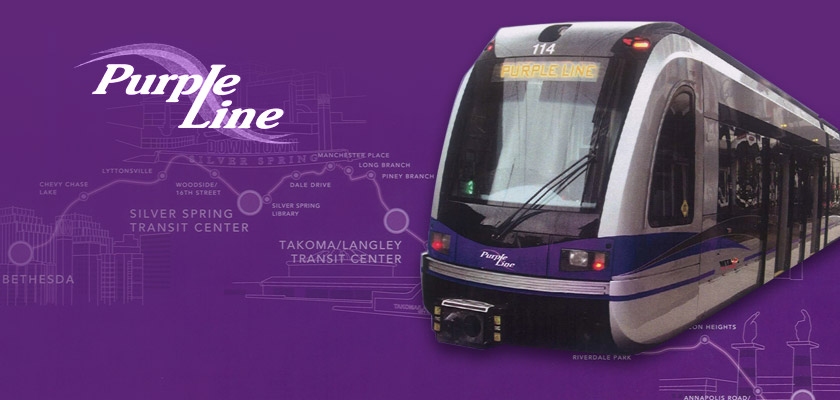
Maryland's Purple Budget Eater
Governor Larry Hogan was putting lipstick on a pig when he claimed Wednesday that a settlement between the state and private contractors over construction of the Purple Line light-rail boondoggle was “successfully saving Maryland taxpayers more than $550 million.” In reality, the settlement added $250 million to the already-bloated cost of the project.
In 2016, Hogan agreed to pay contractors a whopping $5.6 billion to build the 16-mile rail line and operate it for 36 years. This is known as a “public-private partnership” or P3 project. In highway P3s, where the private partner builds a road and is allowed to toll it for several decades, the private partner takes all the risk that tolls will be sufficient to pay the construction cost. This is a great deal for taxpayers and for travelers since such P3 roads relieve congestion at no cost or risk to taxpayers.
With public transit P3s, however, the private partner builds the project and the public agency agrees to reimburse the construction and operating cost with annual payments over several decades. The private partner is guaranteed a profit whether anyone uses it or not while the public takes all of the risk that hardly anyone will ride the transit line.
The confusing P3 terminology may have misled Hogan into thinking that Maryland was getting a low-risk deal. Part of the risk of transit projects is that they almost always have cost overruns. With a highway P3, the private contractor is responsible for the extra costs of any overrun, but with a transit P3, the public partner accepts the risk.
After the Purple Line contract was signed, the partners issued a bunch of change orders. This increased the cost and the private partners wanted the state to cover those increases. The state refused and the private partners quit and sued for $800 million.
Since the settlement was for $250 million, Hogan could claim that it saved $550 million (the difference between $800 million and $250 million). But if there had been no cost overrun--or better yet, no project--in the first place there wouldn’t have been any dispute between the state and the private partners.
If Hogan really wanted to save taxpayers money, he could have simply canceled the project. That would have saved $5.6 billion minus whatever had already been spent, which was at least $3 billion more than the $550 million he claimed he had saved.
Hogan lamely justified continuing the project by claiming that it “will take at least 17,000 cars off the road every day” which will “help to relieve traffic congestion.” In fact, not only will it not relieve congestion, it will make it worse: the traffic analysis for the project concluded that running light rail in and across streets and highways would reduce regional traffic speeds and add 36,000 hours of traffic delays per day.
Hogan also noted that “we have already seen it result in more than $2 billion in office, residential, and commercial projects.” In fact, the only thing preventing such development was Montgomery County’s restrictive zoning laws. The county used the Purple Line as an excuse to change the zoning, and that zoning change is what led to the new development. The developers don’t care whether light rail is completed or not.
Hogan added with pride that the Purple Line is “the largest P3 transit project in North America.” It might be the most wasteful P3 project, but it is hardly the largest. Denver has a 30-mile P3 that cost a lot less money than the Purple Line. New Jersey has a 17-mile P3 that was built through some of the most crowded neighborhoods and expensive real estate in the nation, yet it, too, cost less than the Purple Line.
Governor Hogan mishandled these transit issues from the very start. If you are foolish enough to believe in light rail, then Hogan is the bad guy who killed the Baltimore Red Line. If you see more accurately that light rail is a totally obsolete technology, then Hogan is the bad guy who blew $5.6 billion--now increased to at least $5.85 billion--on the Purple Line. Either way, he made enemies and he should have just cancelled both projects.
The state can still save taxpayers billions by stopping further Purple Line construction and using some of what has already been built as a busway. Hogan has an excellent excuse for doing so given that COVID-19 has devastated transit ridership and there is no certainty that most of those riders will ever come back. But he apparently isn’t brave enough to do that.





